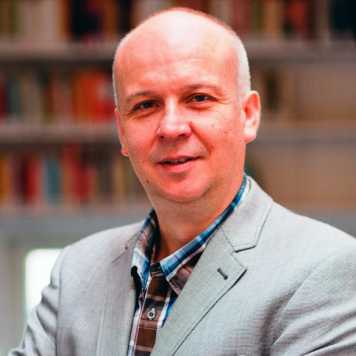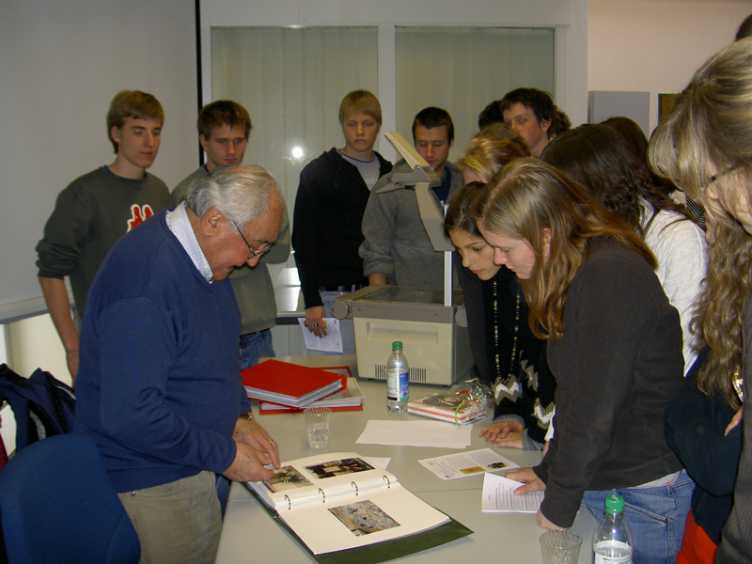The Holocaust is not ‘unimaginable’
Seventy years ago, on 27 January 1945, soldiers of the Red Army liberated the Auschwitz concentration camp. Gregor Spuhler, head of the Archives of Contemporary History at ETH Zurich, explains in an interview how his institution contributes to commemorating the Holocaust.


ETH news: Eduard Kornfeld survived the Holocaust. In video footage that the Archives for Contemporary History shot on the 2008 Holocaust Memorial Day, he provides a chilling description of how he survived being moved from Kaufering (near Augsburg) to the Dachau concentration camp in 1945 and how he later, after the Americans had liberated the camp, was very lucky to survive malnutrition.
Gregor Spuhler: Holocaust survivors are in many cases highly aware that they were lucky to survive. Many survivors were the only ones to make it in their family. This was also the case for Eduard Kornfeld: out of eight family members, only he and his brother survived. Many survivors have agonised all of their lives over the question, "Why exactly, they were so lucky to survive while others did not."
Eduard Kornfeld was imprisoned in both Auschwitz and then Dachau.
Yes, he grew up in Bratislava, Slovakia, and initially hid with his brother in Hungary. He was arrested there in 1944 and deported to Auschwitz. Later he was taken to the Messerschmitt plants near Augsburg to do forced labour and from there to Dachau, where he experienced its liberation by US soldiers in 1945.
How lucky was he to survive?
He survived by getting onto a National Socialist bus, totally exhausted, after a death march to Dachau. Concentration camp prisoners who were not able to continue the march were usually shot. For inexplicable reasons, he was spared this fate. Instead, the bus took him to Dachau. After liberation, he survived because he was given only half a portion of bacon and beans, while others who ate a full portion died of it. Their totally famished bodies were unable to handle the heavy food given to them by the well-intentioned US servicemen.
Was the video shot during an event organised by the Archive of Contemporary History?
From 2005, when the Holocaust Memorial Day was introduced, until 2012, our Documentation Centre Jewish Contemporary History has organised events involving contemporary witnesses for school classes from the 10th form onwards. The contemporary witnesses spoke about their fate for an hour in the Archives and then discussed their story with the pupils. We organised 27 encounters, all of which we recorded in audio and video. We have been offering workshops on the subject of the Holocaust/World War II to school classes for the past two years, using the audio and video footage along with other written documents from our archives for these events.
What is the objective of these encounters and workshops?
The aim is to present the historic context in a vivid manner by having contemporary witnesses tell their individual story. We thereby hope to raise awareness amongst today’s generations, so that such a genocide carried out on an industrial-scale can never happen again.
How do encounters with contemporary witnesses illustrate the memory of the Holocaust?
When a survivor, such as Eduard Kornfeld, tells his story of how he experienced the persecution during World War II, the historic events become very realistic, graphic and clear for schoolchildren. This is important to us, because the Holocaust is occasionally portrayed in public debates as a gargantuan event that cannot be comprehended in its full force. Such a presentation bears the risk of turning into a myth. However, the Holocaust is not ‘unimaginable’. It is possible to describe in very realistic terms how it affected, threatened and destroyed the individual lives of millions of people from the most different parts of Europe.
What do you bear in mind in your approach to the workshops with the pupils?
It’s important that they are not simply emotionally overwhelmed by the illustrations of the Holocaust survivors, but that they also ask questions. A key question that is often asked is how Holocaust survivors were able to process their terrible experiences and return to a − more-or-less − normal family life in the decades after the war.
How do survivors come to terms with their experiences?
Experiencing concentration camps such as Dachau and Auschwitz is one of the worst human experiences of all, without question. How someone comes to terms with a traumatic persecution experience, however, depends not only on the external use of force but also on individual factors.
Do you have an example in your archives?
We have a video with a survivor who was on death marches and was savagely abused. The worst experience for him; however, was when he, as a 16-year-old, was hiding with his family of 20 members while the National Socialists were searching their house. His older sister had a baby and if it screamed everybody would be found and deported. So the mother covered up the baby, at the risk of suffocating it, that fortunately didn’t happen. For that adolescent, the experience of perpetrators succeeding in turning the victims into potential murderers of their own children was far worse than all the physical violence he suffered in the camp.
Are you planning a memorial event for 2015 at the Archives?
The idea of the Memorial Day is important because it means that society continues to debate the Holocaust, genocide, and the reasons that led to it. As an archive, in 2013 we phased out our organised contemporary witness events, one reason was that the number of contemporary witnesses who are still able tell their story is dwindling. Instead, we now offer workshops for school classes throughout the year.
You also have written documents in your archives.
Yes, in addition to contemporary witness accounts, we can also present written documents, such as files from the archives of the Association of Swiss Jewish Refugee Aid and Welfare Organisations, that supported more than 20,000 Jewish refugees in Switzerland at the time. These files will be fully digitalised by the end of 2015 in collaboration with the ETH DigiCenter and the United States Holocaust Memorial Museum in Washington. This makes research easier, in particular as we receive enquiries from around the world regarding refugees who survived in Switzerland.
Contribution to documenting the Holocaust

The Archives of Contemporary History of ETH Zurich store written, audio and video documents from private ownership on the history of Switzerland from the late 19th century to today and make these historic sources publicly accessible.
With its Documentation Centre Jewish Contemporary History, the Archives of Contemporary History fill a void in the Swiss archives landscape. As a research institution that supports remembering, it is one of the world’s Shoa archives and makes a Swiss contribution to documenting the Holocaust in association with numerous other institutions.
- Information on the workshops for school classes: www.afz.ethz.ch/educationandresearch/oralhistory/holocaust-commemoration-day/
- Information on the public guided tours of the collections and archives of ETH Zurich held in the evening: www.afz.ethz.ch/educationandresearch/guided_tours/
Comments
No comments yet